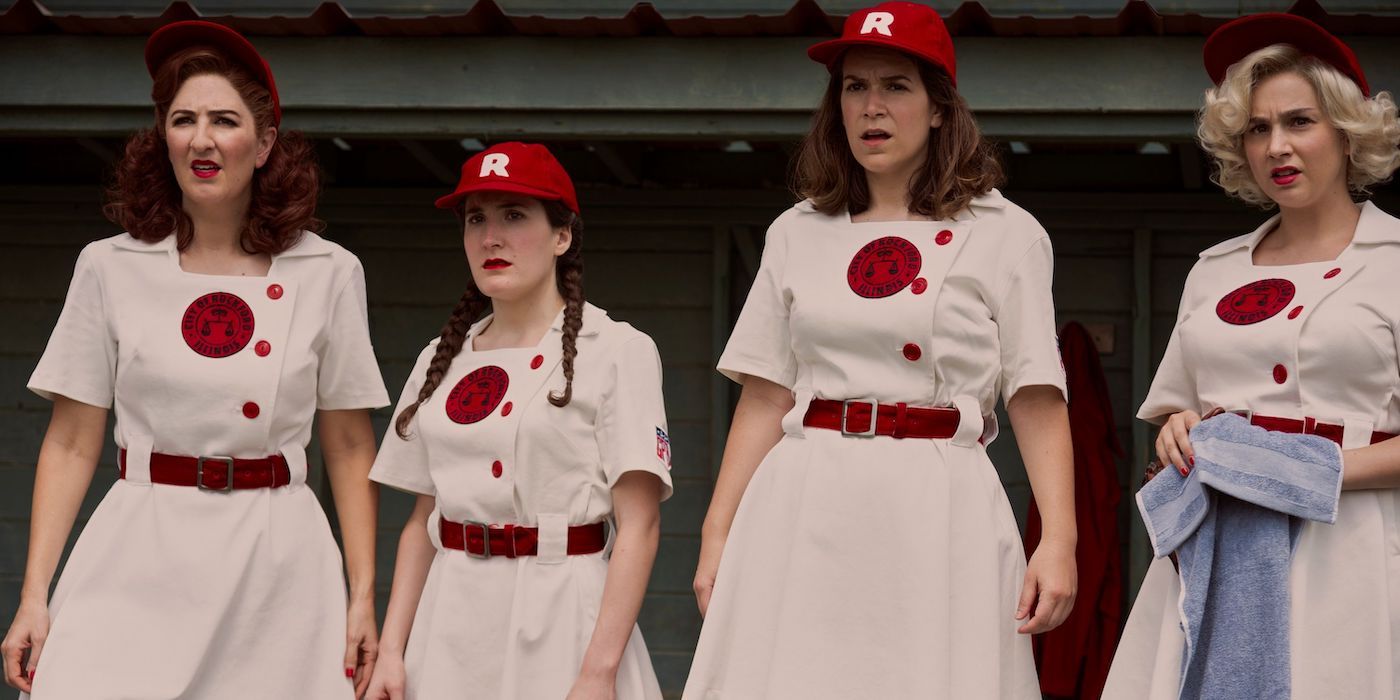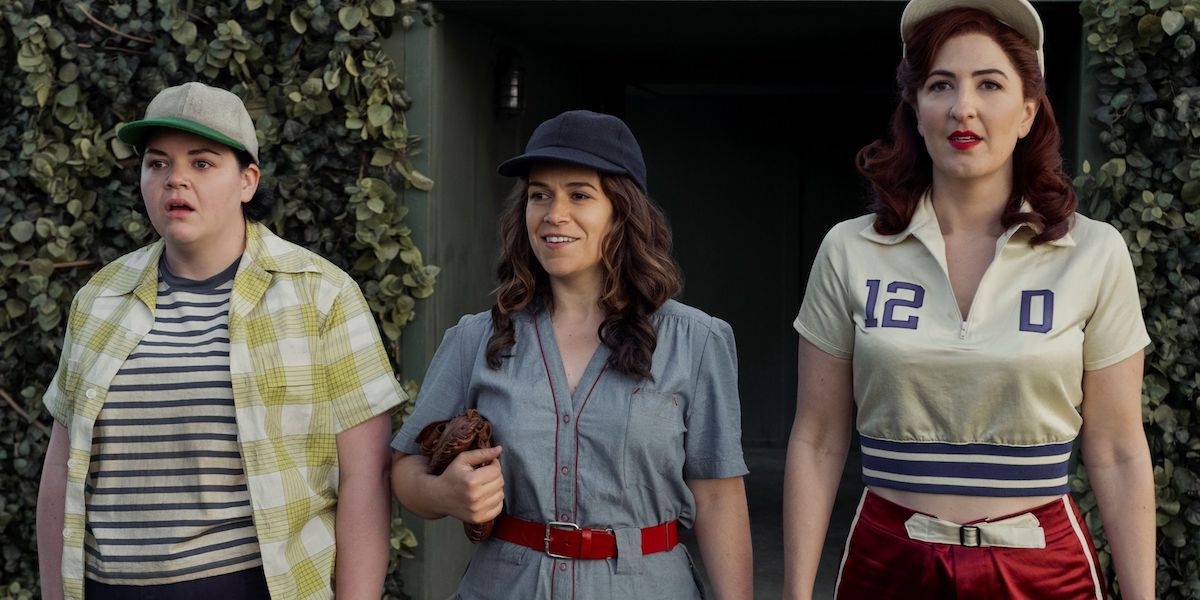Amazon recently released their reboot series of A League of Their Own and the Will Graham and Abbi Jacobson show is much more than just a reimagining of the 1992 film. The series focuses on a women's baseball team set up to compete in an all-female baseball league whilst the majority of men are away fighting in the second world war. It also features stories of race and sexuality, and the problems women faced in this trying time. Whilst the characters in the story are fictionalized, there's a lot of truth behind the series and many of the problems faced onscreen were daily occurrences in the lives of women during the war. But how much of the series is true?
Back in 1942, in the midst of the second world war, the MLB lost a lot of its talent as able men across the United States were drafted to fight for their country. This left the league organizers with major concerns over its future, and in 1943, Philip K Wrigley founded the All-American Girls Professional Baseball League. After numerous tryouts were held, teams were drafted and the women were ready to live their dreams under the watchful eyes of keen sports fans. In the Amazon series, we follow the Rockford Peaches. This was a real team from the league, and in fact, they were the most successful. The series follows their enterprising season, all culminating in a final series against the South Bend Blue Sox for the championship. In reality, this was not how the 1943 season played out. The champions of this inaugural season was actually the Racine Belles, a team rarely mentioned in the series. The Rockford Peaches didn't win the title until the third season in 1945, but they then went on to become the dominant force in the league. Perhaps this is the reason they were chosen as the focus for the series, as it shows their humble beginnings as a team of women just looking to play baseball and live the lives they've dreamed of.
One difference that should be made clear, is that the team members seen onscreen are fictionalized, and therefore were not really a part of this historic team. However, the series focuses on their lives around the sport rather than purely how they fare in the league, and this allows for some true stories to be told. Despite the cast being a fictional one, the issues the women faced were unfortunately true for many women back then. Misogyny plays a huge part in the show, and this was exactly how the women were treated at the foundation of the league. Something shown in the series that rather shockingly mirrors real life, is how the women were forced to attend a charm school, where they would learn beauty routines and take etiquette classes in order to not appear to masculine. The league's organizers wanted its players to look as feminine as possible, and numerous rules were enforced in order to make this happen. Written in the AAGPBL's official 'Rules of Conduct' were rules forbidding girls to have short hair, forbidding the wearing of parts, making lipstick a requirement, and the girls were not allowed to be seen smoking or drinking. Teams were all supplied with chaperones who were responsible for upholding these rules, as seen in the series with Beverly (Dale Dickey).
A key theme throughout the series is the racism faced daily by black women, and the show focuses on the story of Max (Chanté Adams) as she tries to become a professional pitcher. Her story is particularly compelling as it follows her struggles with gender identity, as well as her race. We see Max early on in the series, as she attempts to try out for the Peaches, but is told that black women are ineligible to play. This is something that was unfortunately true for the real league, with the AAGPBL excluding black people, which was also the case for the MLB, until 1947, and black people were forced to play in their own segregated league. Whilst facing her deeply painful personal issues, Max never gives up on her dream to play baseball, and we see towards the end that she is finally successful, as she signs for a predominantly male team in the segregated league. Whilst Max herself wasn't a real person, her story mirrors those of Toni Stone, Mamie Johnson, and Connie Morgan, three black women who played for men's professional teams.
In a contrast to the 1992 Penny Marshall film where none of the characters were openly gay, the series has a heavy focus on queer people and their stories. This gives a chance for the stories of real women to be told in this cinematic world, and one of the most notable issues was keeping their sexuality a secret. Shockingly, homosexuality was deemed to be a mental disorder by the American Psychiatric Association all the way until 1973. There was a lot of misinformation being spread, including the idea that homosexuality was contagious. A scene in the series highlights this when Shirley (Kate Berlant) kisses Carson (Jacobson) and is shocked to find out she hasn't become gay. Whilst played off humorously in the scene by Carson, who knows Shirley doesn't mean any harm, this highlights the propaganda of the time, and it was very common for people to think they could catch homosexuality. The number of gay people in the league was likely very high, and former player Maybelle Blair was one of these. At a panel at the Tribeca Festival, Blair publicly came out in a heartwarming moment, and she is one of many who played in the league who are now able to show their true identities. Another former player, Dot Wilkinson is also gay, and she spoke of how living in the closet was a very common theme. In a 2015 documentary, Extra Innings, Wilkinson said "we were born at a time when we were all in the closet and that was just the name of the game". It's a sad reality that many women had to face, and A League of Their Own gives a platform for these stories to be told.
Despite the series feeling very heartwarming and being a vessel to tell these stories, it's sad to see how this progression in the game wasn't much of a step-forward, and for many women, baseball was the least of their worries.


